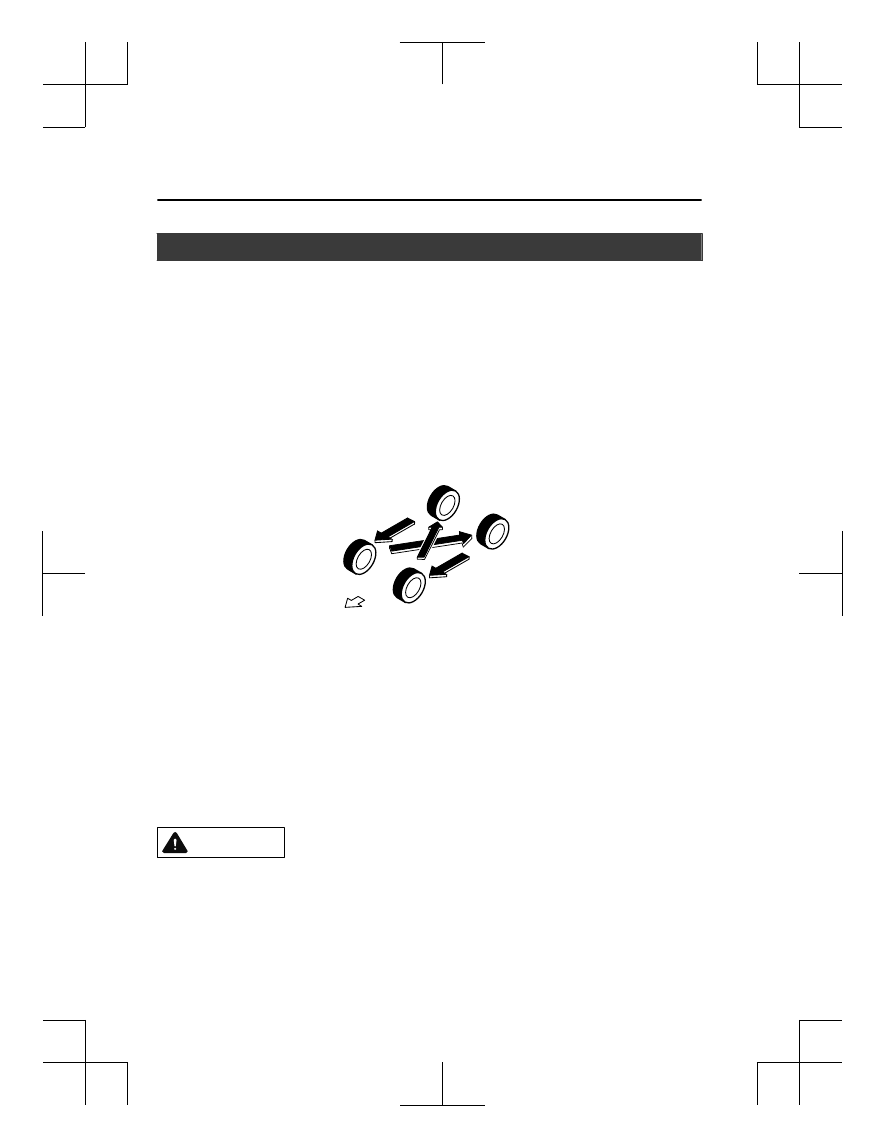Mazda MX-5 (2018 year). Manual - part 34

Tire Maintenance
Improper or inadequate vehicle maintenance can cause tires to wear abnormally. Here are
some important maintenance points:
▼ Tire Inflation Pressure
Inspect all tire pressure monthly (including the spare) when the tires are cold. Maintain
recommended pressures for the best ride, top handling, and minimum tire wear. Use the
pressures specified on the vehicle tire information placard or tire label for optimum service.
▼ Tire Rotation
To equalize tread wear, rotate the tires every 12,000 km (7,500 miles) at the latest or sooner
if irregular wear develops. Mazda recommends to rotate every 8,000 km (5,000 miles) to
help increase tire life and distribute wear more evenly.
Do not include (TEMPORARY USE ONLY)
spare tire in rotation.
Forward
Inspect the tires for uneven wear and damage. Abnormal wear is usually caused by one or a
combination of the following:
Incorrect tire pressure
Improper wheel alignment
Out-of-balance wheel
Severe braking
After rotation, inflate all tire pressures to specification (page 9-8) and inspect the lug nuts
for tightness.
CAUTION
Rotate unidirectional tires and radial tires that have an asymmetrical tread pattern or studs
only from front to rear, not from side to side. Tire performance will be weakened if rotated
from side to side.
Customer Information and Reporting Safety Defects
Tire Information (U.S.A.)
8-34
MX-5_8GF7-EA-17J_Edition2
2017-10-31 14:07:27